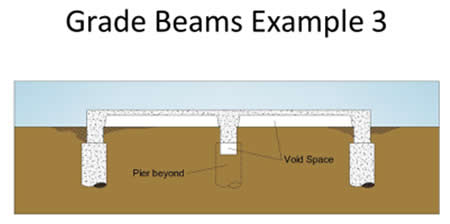

Webmaster: Stansfeld, LLC. |
|
|

NOVEMBER 2014 MEETING
Wednesday, November 12, 2014 (1.0 PDH)
TECHNICAL PROGRAM
Specification and Application of Void Spaces Below Concrete Foundations
Speaker: Greg Carr, P.E., Best Base Foundation Systems, Austin TX, Tel. (512) 996-9323, http://www.thebestbase.com
PRESENTATION SUMMARY 
To an audience of approximately 65 attendees, Mr. Carr presented the FPA’s recently revised paper titled, “Specification and Application of Void Spaces Below Concrete Foundations”. Mr. Carr is co-chair of the FPA Void Space Sub-Committee, which completed its revision work and peer review of the paper this summer.
During the introduction of the presentation, Mr. Carr explained that the use of Void Spaces under concrete foundations has been expanding in the USA and Mexico, as well as other parts of the world, such as Australia, where expansive soil is present and problematic. As good building sites become taken in desirable areas near urban centers, builders are forced to build on less desirable sites with expansive soil.
The use of Void Spaces provides a solution to safely building on expansive soil sites. Void Spaces allow a significant amount of the energy of expanding soil to be dissipated into the voids under the concrete slab. Void Spaces also create an integral matrix of beams under the slab that add significant rigidity to the slab. Void Spaces are created by sacrificial forms that are laid out on the ground before the concrete is poured. The presentation will show the various applications of Void Spaces in concrete foundations.
Mr. Carr reviewed the use of the different categories of void forms including:
- Degradable,
- Non-degradable,
- Collapsible, and
- Non-collapsible
Each of the different void form types have specific properties and are therefore specified for different applications and conditions. Void forms are manufactured from a variety of materials including corrugated paper, molded paper, molded plastic, Styrofoam, expanded metal, sheet metal, wood, etc. The different materials produce void forms with different properties for different applications. The most common application in the gulf coast area is a degradable or collapsible form. The form must be strong enough to withstand the weight of the construction process and must last until the concrete has achieved design strength at which point it loses integrity. Since many of the common void form types are degradable, site storage and handling are critical.
The typical application for void forms is to place them on the graded pad consistent with the arrangement of grade beams and slab. The forms are then protected and the reinforcing placed followed by concrete. The void space created below the concrete allows room for the expansive soil to shrink and swell without affecting the foundation. This process should create a more stable foundation, reduce concrete volume, and reduce soil excavation.
Mr. Carr also reviewed the more significant changes to the revised FPA-SC-11-1 “Specification and Application of Void Spaces Below Concrete Foundations”. Among the changes are ten new glossary terms such as
- Isolated foundation
- Isolated slab
- Degrade
- Deep support system
- Grade beams
- Etc.
As an example, the definition of Void Forms is given as “sacrificial formwork elements designed to provide void space between expansive soil and the foundation, while providing a temporary support formwork for the weight of concrete until it has reached a specified strength.”

The revised paper also has expanded tables that list the pros and cons of the different types of Void Form materials and section titled “Considerations for the use of Void Forms.” The tables and other guidelines in the paper can be used by engineers designing concrete foundations with Void Spaces. Specifications have also been added.
To download a copy of Mr. Carr’s presentation slides, click here.
Click here to download the committee paper FPA-SC-11-1 “Specification and Application of Void Spaces Below Concrete Foundations”
|



